
Supermarine Spitfire Mk. Vb, No. 92 (East India) Sqn RAF, Digby Winter 1941
The scene depicted is taken during No. 92 sqn's more leisurely time in RAF Digby, Lincolnshire. Following No. 92's daring action in the Battle of Britain the squadron was withdrawn to Digby on October 1941 in preparation for a move to Middle East in February the following year.
Earlier that year No. 92 was chosen to became the first squadron to receive the new Merln 45 powered Spitfire Mk.V. However, as no new factory-built Mk.V were yet available they had to make do with interim machines which were, in fact, their old Mk. Ib reengined with Merlin 45 at Rolls-Royce factory at Hucknall. From now on No. 92 would flown a mix of Mk. Ib and Mk. V until last batch of squadron's Mk. Ib, consisting of R7195 and R6923, were flown to Hucknall on 7 April 1941.
Here we can see Second Officer (Equivalent to RAF rank of Flying Officer) Huskyteer and First Officer (Flight Lieutenant)
Huskyteer and First Officer (Flight Lieutenant)  VixyyFox delivering the latest of No. 92's factory-built Spitfire Mk. Vb. The aircraft featured late-type windscreen consisting of integral armoured center panel - which, surprisingly, has similar shape to earlier external armoured glass - and flat side panels, this arrangement was first introduced on Spitfire Mk. III and adapted by Supermarine-built Mk. V starting from May 1941. while this arrangement became standard from Mk.Vc onwards, and fitted to many Mk. Vb produced from 1942 onwards (ER-, EP-,AR-serials etc), i found it very rare on earlier 1941 produced Mk. Vb (Supermarine produced R-, W- and X-serials). The only photo evidence of such machines were 'New Yorklin', serial unknown, a presentation aircraft photographed with S/L R.M. Milne, OC No. 92 Sqn, 'Bristol Air Raid Warden', R7260, another presentation aircraft flown by P/O N.R.D. Dick of No. 403 Sqn RCAF and 'Victory is Ours', W8707(?), flown by F/L J.H. Whalen of No. 129 Sqn. To add into this confusion, all three photos also seem to show knock-out panels normally fitted to earlier smaller bulged hood!
VixyyFox delivering the latest of No. 92's factory-built Spitfire Mk. Vb. The aircraft featured late-type windscreen consisting of integral armoured center panel - which, surprisingly, has similar shape to earlier external armoured glass - and flat side panels, this arrangement was first introduced on Spitfire Mk. III and adapted by Supermarine-built Mk. V starting from May 1941. while this arrangement became standard from Mk.Vc onwards, and fitted to many Mk. Vb produced from 1942 onwards (ER-, EP-,AR-serials etc), i found it very rare on earlier 1941 produced Mk. Vb (Supermarine produced R-, W- and X-serials). The only photo evidence of such machines were 'New Yorklin', serial unknown, a presentation aircraft photographed with S/L R.M. Milne, OC No. 92 Sqn, 'Bristol Air Raid Warden', R7260, another presentation aircraft flown by P/O N.R.D. Dick of No. 403 Sqn RCAF and 'Victory is Ours', W8707(?), flown by F/L J.H. Whalen of No. 129 Sqn. To add into this confusion, all three photos also seem to show knock-out panels normally fitted to earlier smaller bulged hood!
One interesting thing to note about Spitfire construction, is that despite being designed as high performance aircraft and with the proven low-drag property of flush riveting devised by Howard Hughes, Air ministry and Supermarine eventually had to compromise between performance and cost by using mushroom head rivets on rear fuselage section, these were quite prominent even under usual sunlight.
One of No. 92 sqn's officer, F/L Corn ( ant), was present to welcome the two 'Attagirls'. He was wearing RAF No. 1 service dress, the jacket was single breasted with lapels, four gold buttons and a fabric belt that buckles between the bottom two buttons whilst it has flapped pockets on the breast and lapels. the two stripes on his cuffs indicated his rank of Flight Lieutenant. Officer's service dress was usually tailored from finer Barathea wool in contrast to OR's 'hairy mary' service dress which, as the name suggest, made from coarser material and has duller colour
ant), was present to welcome the two 'Attagirls'. He was wearing RAF No. 1 service dress, the jacket was single breasted with lapels, four gold buttons and a fabric belt that buckles between the bottom two buttons whilst it has flapped pockets on the breast and lapels. the two stripes on his cuffs indicated his rank of Flight Lieutenant. Officer's service dress was usually tailored from finer Barathea wool in contrast to OR's 'hairy mary' service dress which, as the name suggest, made from coarser material and has duller colour
F/L Corn was accompanied by Cpl. Alex ( bering) of the WAAF, who generously brought tea for everyone present. She was wearing WAAF service dress which was directly patterned on the pre-war RAF service dress uniform in that it was a belted, button-fastened jacket with four flapped and buttoned pockets. It's important to note that WAAF jackets always buttoned-up in the male fashion rather than in the usual female style. This was because campaign and decoration ribbons are always worn on the left breast and would be obscured by the usual female fastening. WAAF ORs (but not officers) wore the RAF eagle insignia at the top of both upper sleeves just below the shoulder. These were embroidered in pale blue on a black felt background
bering) of the WAAF, who generously brought tea for everyone present. She was wearing WAAF service dress which was directly patterned on the pre-war RAF service dress uniform in that it was a belted, button-fastened jacket with four flapped and buttoned pockets. It's important to note that WAAF jackets always buttoned-up in the male fashion rather than in the usual female style. This was because campaign and decoration ribbons are always worn on the left breast and would be obscured by the usual female fastening. WAAF ORs (but not officers) wore the RAF eagle insignia at the top of both upper sleeves just below the shoulder. These were embroidered in pale blue on a black felt background
In fact, there is an interesting story behind this 'eagle' insignia, during the world war II there have been some debate whether the bird depicted on the insignia is actually an eagle or an albatross. To quell the debate, the Air Ministry issued order A.666/49 in 1949 declaring that the bird was in fact an eagle. However, while living at The Gables in the late 1970s, the designer of insignia, Charles Pepper, told local newspaper journalist Ivor Wynne Jones: “I rejected the eagle because it was the badge of the Germans, who were then our enemy.” Mr Pepper chose instead the albatross as the basis for his insignia after a visit to the British Museum, where taxidermists had mounted an albatross soaring majestically. Personally i prefer to think that it is indeed an albatross for it's impressive - and indeed, majestic - wing span, but i digress
Similarly, ORs wore an embroidered 'A' badge (white embroidery on a square black felt background) on their upper arms just below their RAF eagle shoulder insignia . This practice was officially discontinued after January 1942, but WAAFs who had enlisted prior to that were permitted to continue wearing their auxiliary insignia.
Second Officer Huskyteer was wearing a male-pattern ATA service dress which is identical to that used by RAF officers, while the design was identical the color was a ultra dark blue similar to that used in civil defense uniform. The buttons were always black and often featured the ATA initials underneath a coronet. All qualified ATA pilots were issued with a set of golden wings which were worn above the left breast pocket like RAF wings. Golden stripe on the shoulder straps indicated her rank, in this case one wide stripe and one narrow stripe indicated the rank of Second Officer. Like the Merchant Navy the ATA used a colour code system where the rank stripes would feature an additional colour to denote the wearer's role, pilots and anyone holding a pilot's wings had dark blue color similar to that used for the uniform. Being second line personnel, she was issued with older 1932-pattern canadian-made life vest, these were made from yellow cotton with the stencils applied over the top. she also wore 1933-pattern leather flying gloves with vertical zip in contrast to newer 1941-pattern gloves which have diagonal zip.
Huskyteer's associate, First Officer Vixyy Fox had removed her dress jacket, underneath she wore pale (wedgwood) blue shirt which was button-fronted, collar-attached style without breast pockets or epaulettes. ATA trousers also identical with its RAF counterpart except for its dark blue colour, the trousers was high-waisted and features two slant hand pockets on each sides, belt lops, and button fly
Very, very long overdue image for vixyyfox
vixyyfox
The scene depicted is taken during No. 92 sqn's more leisurely time in RAF Digby, Lincolnshire. Following No. 92's daring action in the Battle of Britain the squadron was withdrawn to Digby on October 1941 in preparation for a move to Middle East in February the following year.
Earlier that year No. 92 was chosen to became the first squadron to receive the new Merln 45 powered Spitfire Mk.V. However, as no new factory-built Mk.V were yet available they had to make do with interim machines which were, in fact, their old Mk. Ib reengined with Merlin 45 at Rolls-Royce factory at Hucknall. From now on No. 92 would flown a mix of Mk. Ib and Mk. V until last batch of squadron's Mk. Ib, consisting of R7195 and R6923, were flown to Hucknall on 7 April 1941.
Here we can see Second Officer (Equivalent to RAF rank of Flying Officer)
 Huskyteer and First Officer (Flight Lieutenant)
Huskyteer and First Officer (Flight Lieutenant)  VixyyFox delivering the latest of No. 92's factory-built Spitfire Mk. Vb. The aircraft featured late-type windscreen consisting of integral armoured center panel - which, surprisingly, has similar shape to earlier external armoured glass - and flat side panels, this arrangement was first introduced on Spitfire Mk. III and adapted by Supermarine-built Mk. V starting from May 1941. while this arrangement became standard from Mk.Vc onwards, and fitted to many Mk. Vb produced from 1942 onwards (ER-, EP-,AR-serials etc), i found it very rare on earlier 1941 produced Mk. Vb (Supermarine produced R-, W- and X-serials). The only photo evidence of such machines were 'New Yorklin', serial unknown, a presentation aircraft photographed with S/L R.M. Milne, OC No. 92 Sqn, 'Bristol Air Raid Warden', R7260, another presentation aircraft flown by P/O N.R.D. Dick of No. 403 Sqn RCAF and 'Victory is Ours', W8707(?), flown by F/L J.H. Whalen of No. 129 Sqn. To add into this confusion, all three photos also seem to show knock-out panels normally fitted to earlier smaller bulged hood!
VixyyFox delivering the latest of No. 92's factory-built Spitfire Mk. Vb. The aircraft featured late-type windscreen consisting of integral armoured center panel - which, surprisingly, has similar shape to earlier external armoured glass - and flat side panels, this arrangement was first introduced on Spitfire Mk. III and adapted by Supermarine-built Mk. V starting from May 1941. while this arrangement became standard from Mk.Vc onwards, and fitted to many Mk. Vb produced from 1942 onwards (ER-, EP-,AR-serials etc), i found it very rare on earlier 1941 produced Mk. Vb (Supermarine produced R-, W- and X-serials). The only photo evidence of such machines were 'New Yorklin', serial unknown, a presentation aircraft photographed with S/L R.M. Milne, OC No. 92 Sqn, 'Bristol Air Raid Warden', R7260, another presentation aircraft flown by P/O N.R.D. Dick of No. 403 Sqn RCAF and 'Victory is Ours', W8707(?), flown by F/L J.H. Whalen of No. 129 Sqn. To add into this confusion, all three photos also seem to show knock-out panels normally fitted to earlier smaller bulged hood! One interesting thing to note about Spitfire construction, is that despite being designed as high performance aircraft and with the proven low-drag property of flush riveting devised by Howard Hughes, Air ministry and Supermarine eventually had to compromise between performance and cost by using mushroom head rivets on rear fuselage section, these were quite prominent even under usual sunlight.
One of No. 92 sqn's officer, F/L Corn (
 ant), was present to welcome the two 'Attagirls'. He was wearing RAF No. 1 service dress, the jacket was single breasted with lapels, four gold buttons and a fabric belt that buckles between the bottom two buttons whilst it has flapped pockets on the breast and lapels. the two stripes on his cuffs indicated his rank of Flight Lieutenant. Officer's service dress was usually tailored from finer Barathea wool in contrast to OR's 'hairy mary' service dress which, as the name suggest, made from coarser material and has duller colour
ant), was present to welcome the two 'Attagirls'. He was wearing RAF No. 1 service dress, the jacket was single breasted with lapels, four gold buttons and a fabric belt that buckles between the bottom two buttons whilst it has flapped pockets on the breast and lapels. the two stripes on his cuffs indicated his rank of Flight Lieutenant. Officer's service dress was usually tailored from finer Barathea wool in contrast to OR's 'hairy mary' service dress which, as the name suggest, made from coarser material and has duller colour F/L Corn was accompanied by Cpl. Alex (
 bering) of the WAAF, who generously brought tea for everyone present. She was wearing WAAF service dress which was directly patterned on the pre-war RAF service dress uniform in that it was a belted, button-fastened jacket with four flapped and buttoned pockets. It's important to note that WAAF jackets always buttoned-up in the male fashion rather than in the usual female style. This was because campaign and decoration ribbons are always worn on the left breast and would be obscured by the usual female fastening. WAAF ORs (but not officers) wore the RAF eagle insignia at the top of both upper sleeves just below the shoulder. These were embroidered in pale blue on a black felt background
bering) of the WAAF, who generously brought tea for everyone present. She was wearing WAAF service dress which was directly patterned on the pre-war RAF service dress uniform in that it was a belted, button-fastened jacket with four flapped and buttoned pockets. It's important to note that WAAF jackets always buttoned-up in the male fashion rather than in the usual female style. This was because campaign and decoration ribbons are always worn on the left breast and would be obscured by the usual female fastening. WAAF ORs (but not officers) wore the RAF eagle insignia at the top of both upper sleeves just below the shoulder. These were embroidered in pale blue on a black felt backgroundIn fact, there is an interesting story behind this 'eagle' insignia, during the world war II there have been some debate whether the bird depicted on the insignia is actually an eagle or an albatross. To quell the debate, the Air Ministry issued order A.666/49 in 1949 declaring that the bird was in fact an eagle. However, while living at The Gables in the late 1970s, the designer of insignia, Charles Pepper, told local newspaper journalist Ivor Wynne Jones: “I rejected the eagle because it was the badge of the Germans, who were then our enemy.” Mr Pepper chose instead the albatross as the basis for his insignia after a visit to the British Museum, where taxidermists had mounted an albatross soaring majestically. Personally i prefer to think that it is indeed an albatross for it's impressive - and indeed, majestic - wing span, but i digress
Similarly, ORs wore an embroidered 'A' badge (white embroidery on a square black felt background) on their upper arms just below their RAF eagle shoulder insignia . This practice was officially discontinued after January 1942, but WAAFs who had enlisted prior to that were permitted to continue wearing their auxiliary insignia.
Second Officer Huskyteer was wearing a male-pattern ATA service dress which is identical to that used by RAF officers, while the design was identical the color was a ultra dark blue similar to that used in civil defense uniform. The buttons were always black and often featured the ATA initials underneath a coronet. All qualified ATA pilots were issued with a set of golden wings which were worn above the left breast pocket like RAF wings. Golden stripe on the shoulder straps indicated her rank, in this case one wide stripe and one narrow stripe indicated the rank of Second Officer. Like the Merchant Navy the ATA used a colour code system where the rank stripes would feature an additional colour to denote the wearer's role, pilots and anyone holding a pilot's wings had dark blue color similar to that used for the uniform. Being second line personnel, she was issued with older 1932-pattern canadian-made life vest, these were made from yellow cotton with the stencils applied over the top. she also wore 1933-pattern leather flying gloves with vertical zip in contrast to newer 1941-pattern gloves which have diagonal zip.
Huskyteer's associate, First Officer Vixyy Fox had removed her dress jacket, underneath she wore pale (wedgwood) blue shirt which was button-fronted, collar-attached style without breast pockets or epaulettes. ATA trousers also identical with its RAF counterpart except for its dark blue colour, the trousers was high-waisted and features two slant hand pockets on each sides, belt lops, and button fly
Very, very long overdue image for
 vixyyfox
vixyyfox
Category All / All
Species Unspecified / Any
Size 1200 x 849px
File Size 471.7 kB
Yes, Herge is very fluent in drawing technical stuff. very clean precise lines with impressive technical accuracy
http://users.skynet.be/tintinpassio.....62_Avion2.html
http://users.skynet.be/tintinpassio.....62_Avion2.html
As ever, you attention to the tiniest detail, on the aircraft as well as on the fine people illustrated, is simply wonderful! It's a pity I've been sent to the Pacific Theatre - I could do with a good cuppa round about now. ;-p
Thank you for sharing this masterpiece; it really is a fine tribute to Ant, Bering, Husky, and Vixxy, and to the Spitfire Mk. V.
Thank you for sharing this masterpiece; it really is a fine tribute to Ant, Bering, Husky, and Vixxy, and to the Spitfire Mk. V.
Flush rivets are only really effective on leading edges and engine cowlings. Once the air is displaced, the advantage disappears in the turbulence. Most modern prop aircraft are built that way, Cessnas I've been around were built like that. Spitfires in the Battle of Britain had a float carburetor that would cut out the engine when inverted or pulling negative Gs. It was a deadly flaw for a front line fighter that was initially fixed by Mrs. Shillings Orifice then a totally different carburetor setup later.
It is a really nice picture, I like it a lot.
It is a really nice picture, I like it a lot.
oddly, on the Learjet, about every fifth fastener in the wing leading edge is a button head... I was told these were supposed to be temporary but when they were flushed out after the initial flight tests, the aircraft wouldn't fly properly so they put them back...
I am still staggered by the details Graue... I read Keefur's comments about the tea set - now that's just cool...
V.
I am still staggered by the details Graue... I read Keefur's comments about the tea set - now that's just cool...
V.
Vid of the A T A ladies...https://www.youtube.com/watch?v=Zz67j3BurE0 THE COLONEL

 FA+
FA+






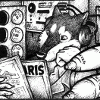



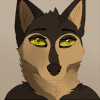

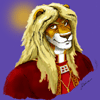




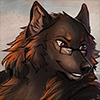
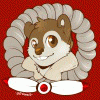






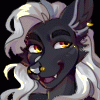



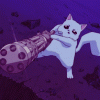

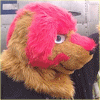
Comments